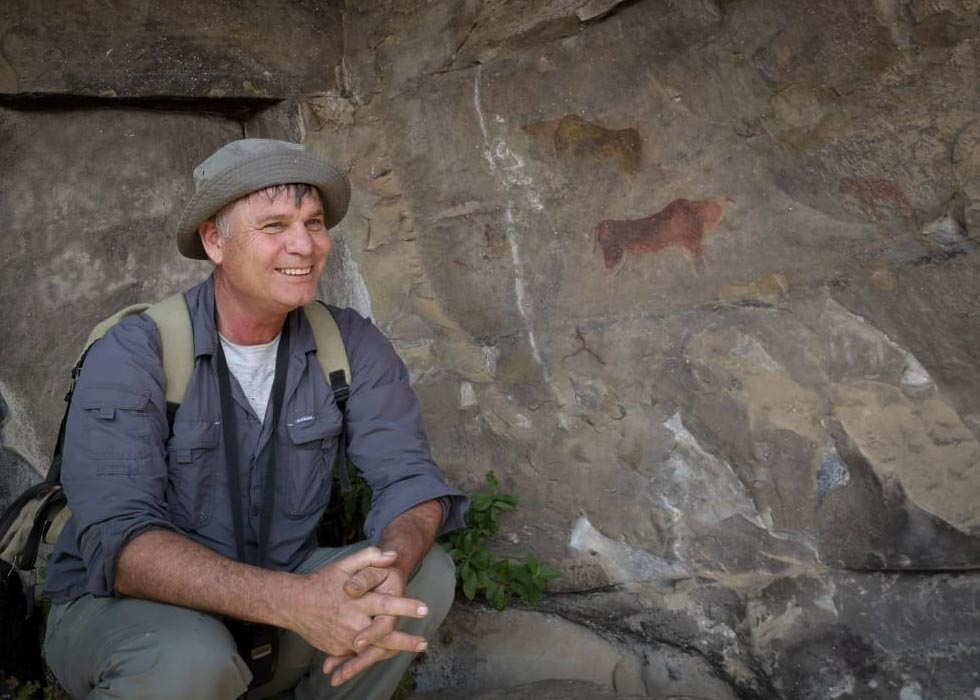
Rock art with Jeremy
Getting in touch with rock art
Visiting rock art: tours
I’d love to take you to some of the world’s best rock art
To get in touch with rock paintings you have to go and visit them in the landscape where they belong! It is a special feeling to spend time in the presence of the paintings or engravings (petroglyphs) and to understand and respect the symbols of an ancient tradition of painting and engraving the rocks of southern Africa
I can take you to special places that are found on the hills and in the overhangs of the southern African landscape
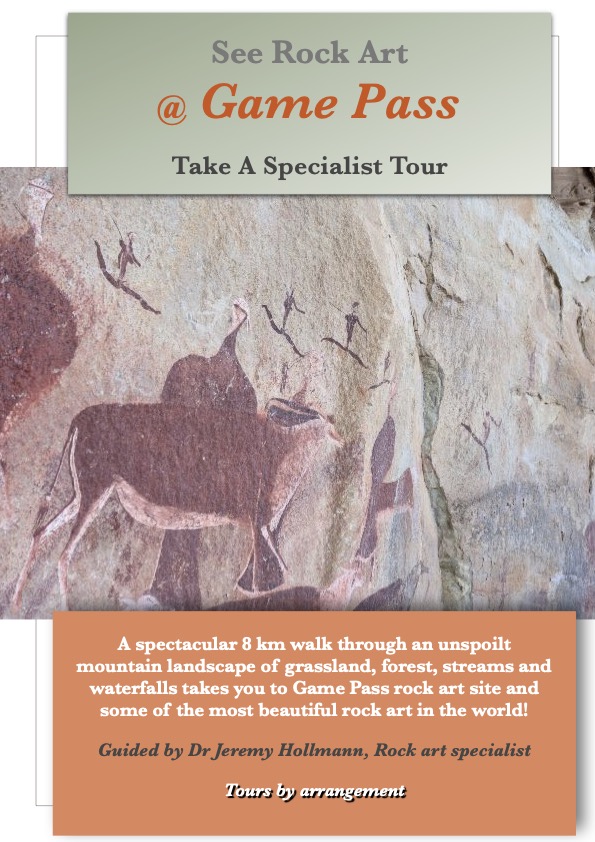
Drakensberg rock art course
The Drakensberg rock art course is presented in association with Birding with Aldo online. Begin your journey into the wonderful world of the rock art of the Maloti-Drakensberg. You will be entranced by the rock paintings made by the ancestral San of the Maloti-Drakensberg. The 3 session course is designed to introduce you to the beauty, complexity and interpretations of this fragile heritage. Cost is R550 per person, or R700 per couple. You have a choice to attend either a morning or evening session. participants receive a PDF document of the course. The course starts on 1 November
Session 1: Home on the Range
The Maloti-Drakensberg range has been home, periodically, to groups of people over the past two hundred thousand years. Most recently, in the past 10 000 years, these mountains were the home range of Later Stone Age hunter-gatherers, the ancestors of the people we call the San, or Bushmen. Then, around 2000 years ago Khoi herders and Bantu-speaking farmers arrived in southern Africa and entered the mountainous landscape. Finally, about 200 years ago European settlers came into the picture. With their arrival the independent lifestyle of the San/Bushmen came to an end. In this session we take a bird’s eye view of the Maloti Drakensberg and pay a virtual visit to the areas or regions of art that are found along the length of the range
Session 2: “A truly artistic conception…”
The rock art of the Maloti Drakensberg is acknowledged to be amongst the world’s finest. The art was described in 1870s as “a truly artistic conception of the ideas which most deeply moved the Bushman mind, and filled it with religious feelings”. In this session we explore the symbolism of San/Bushman rock art and investigate their meanings, based on or knowledge of San/Bushman beliefs. We explain what and how we know about the meaning of the art, the possible ingredients of the paints and the question of the age of the rock art
Session 3: Painted landscapes
The southern African landscape is covered with rock art sites. The Maloti Drakensberg has dense clusters of rock art sites. Their presence played a crucial role in the successful declaration of the uKhahlamba-Drakensberg Park (UDP) as a World Heritage Site in 2000. These sites range from very small overhangs with a few paintings to large outcrops decorated with over 1000 images. In this session we explore some of these places. We will see the great variety in images, variations in painting techniques and preservation over time and space. We will also look at some of the threats that face the future of this fragile heritage. We present a bucket-list of rock art sites that people can visit
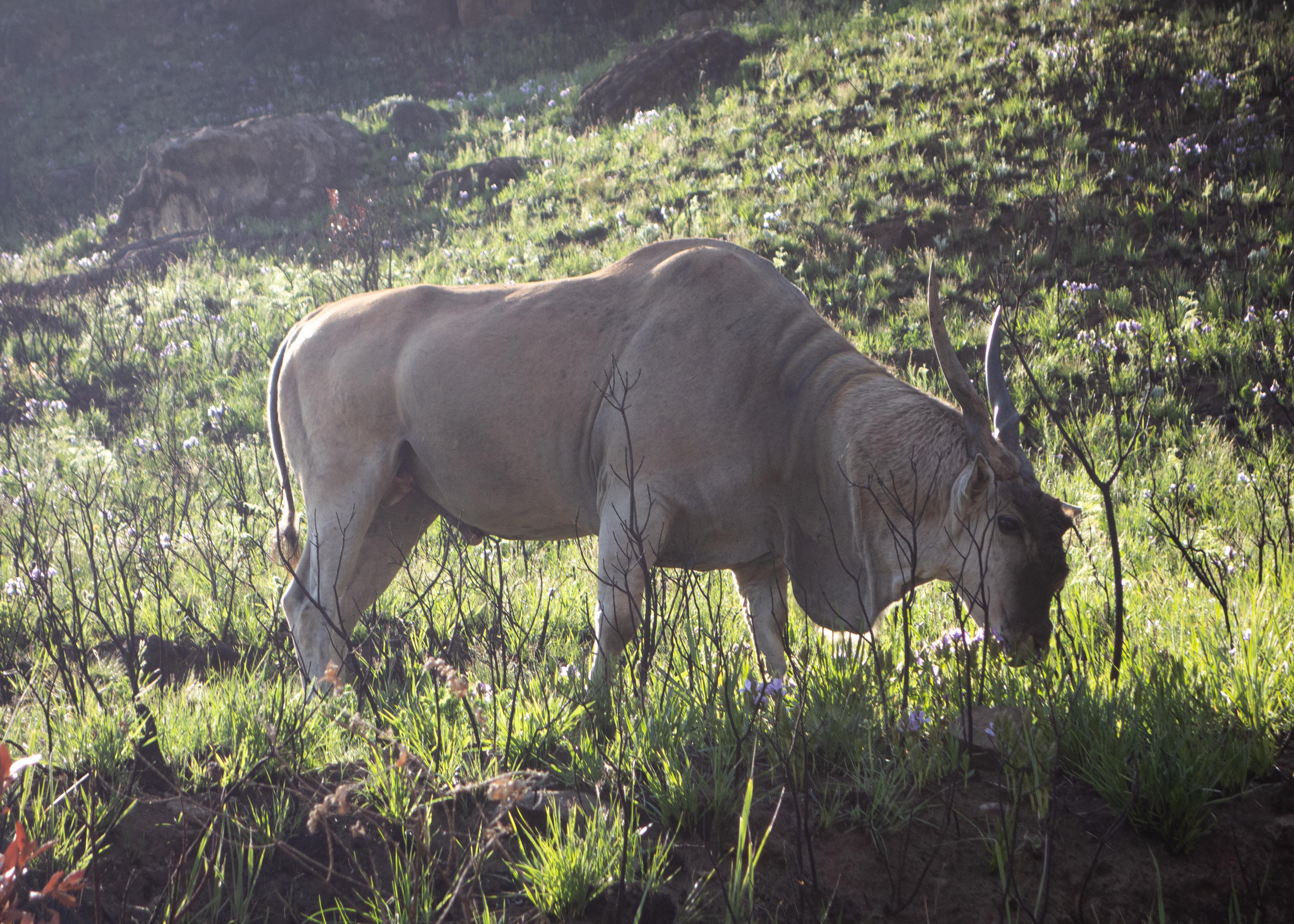
Eland browsing. These magnificent animals are one of the most commonly depicted subjects in the rock art.
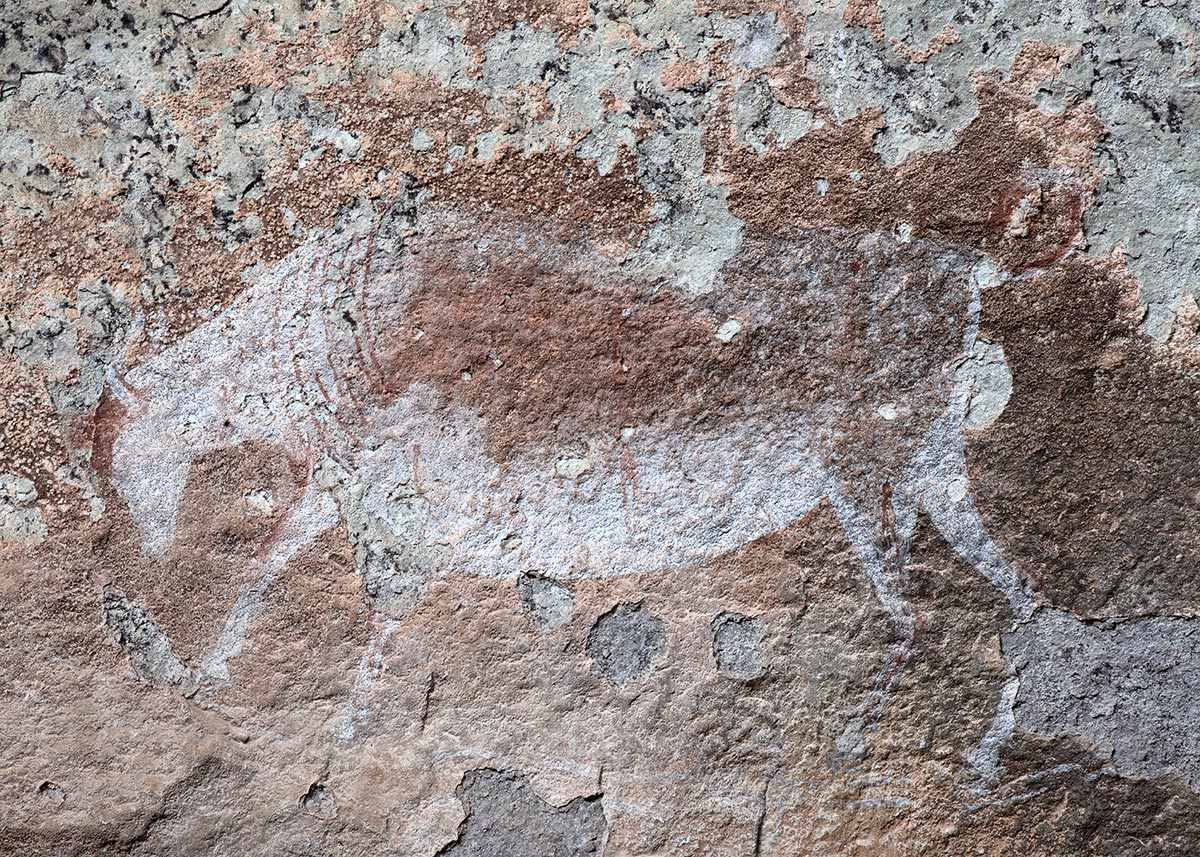
Painting of an eland from Cat Cave in the northern Drakensberg. Notice the forehead tuft and the lines on the neck that depict rolls of fat. The white neck and other white parts of the body show that this image depicts an old eland
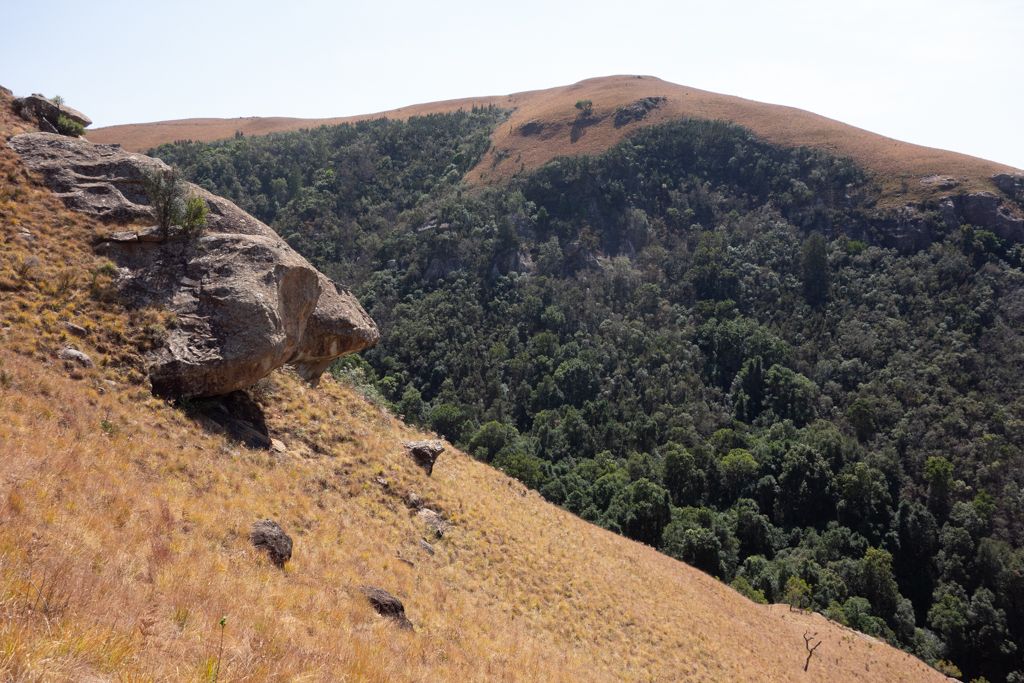
Maloti-Drakensberg rock paintings are mostly made in sandstone overhangs like this. There is a large patch of Afromontane forest on the other side of the valley that would have been home to plants and animals that the ancestral San would have collected and hunted